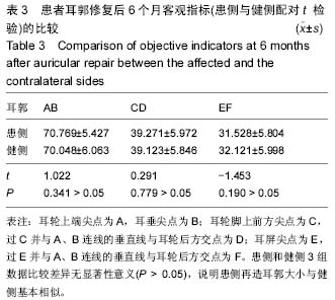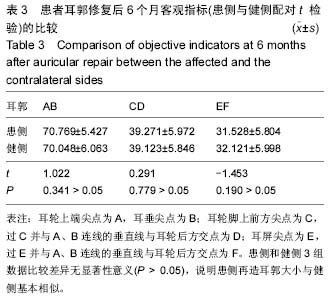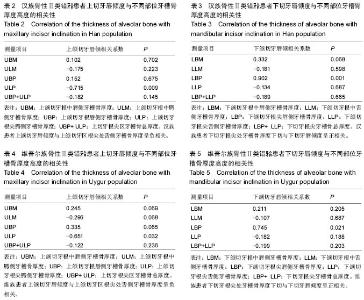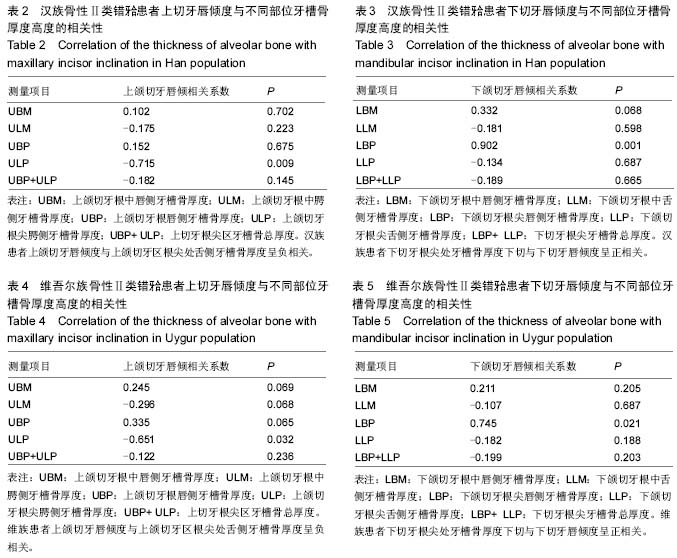| [1] 傅民魁.口腔正畸学[M].北京:人民卫生出版社,2012:6.
[2] AlKharafi L,AlHajery D,Andersson L.Orthognathic surgery: pretreatment information and patient satisfaction. Med Princ Pract.2014;23(3):218-224.
[3] 郭新星,王春玲,刘东旭,等.骨性Ⅲ类错合、正常牙合切牙区牙槽骨形态结构的初步研究[J].上海口腔医学,2005, 14(6):593-595.
[4] 刘爱青,张继东.Ⅱ类骨面型前牙深覆盖患者牙与牙槽骨特征分析[J].广东牙病防治,2011,19(12):627-630.
[5] Carpentier S,van Gastel J,Schoenaers J,et al. Evaluation of transverse maxillary expansion after a segmental posterior subapical maxillary osteotomy in cleft lip and palate patients with severe collapse of the lateral maxillary segments. Cleft Palate Craniofac J. 2014;51(6):651-657.
[6] 季娟娟,姚霜,刘晓君,等.成人不同错颌畸形分类与垂直型牙槽骨吸收的关系研究[J].牙体牙髓牙周病学杂志,2014, 24(10):599-601.
[7] Nayak Krishna US, Shetty A, Girija MP. Changes in alveolar bone thickness due to retraction of anterior teeth during orthodontic treatment: a cephalometric and computed tomography comparative study.Indian J Dent Res.2013;24(6):736-741.
[8] 靳华,罗颂椒,白丁.新疆维族正常合成人颅面硬组织结构的X线头影测量研究[J].北京口腔医学,2001, 9(4):179-181.
[9] Paetyangkul A, Türk T, Elekda?-Türk S.Physical properties of root cementum: part 14. The amount of root resorption after force application for 12 weeks on maxillary and mandibular premolars:a microcomputed- tomography study. Am J Orthod Dentofacial Orthop. 2009;136(4):4921-4929.
[10] Almeida NV, Silveira GS, Pereira DM, et al. Interproximal wear versus incisors extraction to solve anterior lower crowding: A systematic review. Dental Press J Orthod.2015;20(1):66-73.
[11] 裴金莹.成人安氏Ι类双颌前突切牙区牙槽骨形态结构的CBCT研究[D].西安:第四军医大学,2013.
[12] 陶沙,李锦标,王春雨.天津市恒牙早期正常合牙、颌、颅面结构特征研究[J].现代口腔医学杂志,2001,15(5): 359-361.
[13] 王建国,傅民魁.正常合藏族人颅面硬组织结构分析[J].中华口腔医学志,2003,83(4):319-320.
[14] Faruqui S,Fida M,Shaikh A.Cervical vertebral anomalies in skeletal malocclusions: a cross-sectional study on orthodontic patients at the Aga Khan University Hospital, Pakistan. Indian J Dent Res.2014 25(4):480-484.
[15] 沈建伟,何福明,江巧红.上颌前牙与前磨牙唇侧骨壁厚度的CBCT测量分析[J].浙江大学学报,2012,41(3): 234-238.
[16] 邵菊萍,那宾,白雪芹.成年人安氏Ⅱ类1分类错合不同垂直骨面型切牙唇倾度的测量研究[J].中华口腔医学研究杂志,2011,5(4):418-421.
[17] Lagravere MO,Carey J, Heo G,et al.Transverse, vertical, and anteroposte-rior changes from bone-anchored maxillary expansion vs traditional rapid maxil-lary expansion:A randomized clinical trial.Am J Orthod Dentofacial Orthop.2010;137(3):304-305.
[18] Gracco A, Lombardo L, Mancuso G.Upper incisor position and bony support in untreated patients as seen on CBCT.Angle Orthod.2009;79(4):692-702.
[19] Tsunori M, Mashita M, Kasai K.Relationship between facial types and tooth and bone characteristics of the mandible obtained by CT scanning. Angle Orthod. 1998;68(6):557-562.
[20] 张莉,王博,房兵.骨性Ⅲ类错合下前牙区牙槽骨形态的锥形束CT分析[J].中国口腔颌面外科杂志,2012,10(1): 38-41.
[21] 韩剑丽,刘进,葛元输,等.安氏Ⅰ类错合儿童上颌切牙唇腭侧齿槽厚度的CBCT研究[J].临床口腔医学杂志,2012, 28(8):497-499.
[22] 周慧,王洋,曹阳.不同垂直骨面型尖牙区牙槽骨形态的锥形束CT研究[J].中华口腔医学研究杂志,2011,5(6): 621-627.
[23] Swasty D,Lee J,Huang JC.Cross-sectional human mandibular morphology as assessed in vivo by cone-beam computed tomography in patients with different vertical facial dimensions.Am J Orthod Dentofacial Orthop.2011;139(4):377-389.
[24] 何科,任嫒姝,戴红卫.不同垂直面型Angle 1类错合切牙区颌骨形态结构比较研究[J].重庆医学,2012,41(14): 1361-1363.
[25] Nahás-Scocate AC, de Siqueira Brandão A, Patel MP. Bone tissue amount related to upper incisors inclination. Angle Orthod.2014;84(2):279-285.
[26] 周艺群,王慧明,沈建伟.中国人上颌前牙区骨质形态的CBCT测量分析[J].中国口腔种植学杂志,2013,18(2): 118-120.
[27] Baysal A, Ucar FI, Buyuk SK. Alveolar bone thickness and lower incisor position in skeletal Class I and Class II malocclusions assessed with cone-beam computed tomography. Korean J Orthod.2013;43(3):134-140.
[28] Yu Q, Pan XG, Ji GP. The association between lower incisal inclination and morphology of the supporting alveolar bone--a cone-beam CT study. Int J Oral Sci. 2009;1(4):217-223.
[29] 迪丽努尔,艾则孜,古丽努尔.维吾尔族正常合青年牙、牙弓、基骨的测量研究[J].临床口腔医学杂志,2006,22(1): 50-51.
[30] 徐翔,孙花,王旭.DOWNS WYLIE分析法对新疆维吾尔族正常合儿童颅面结构的X线头影测量的研究[J].武警医学, 2001,12(12):707-709. |



